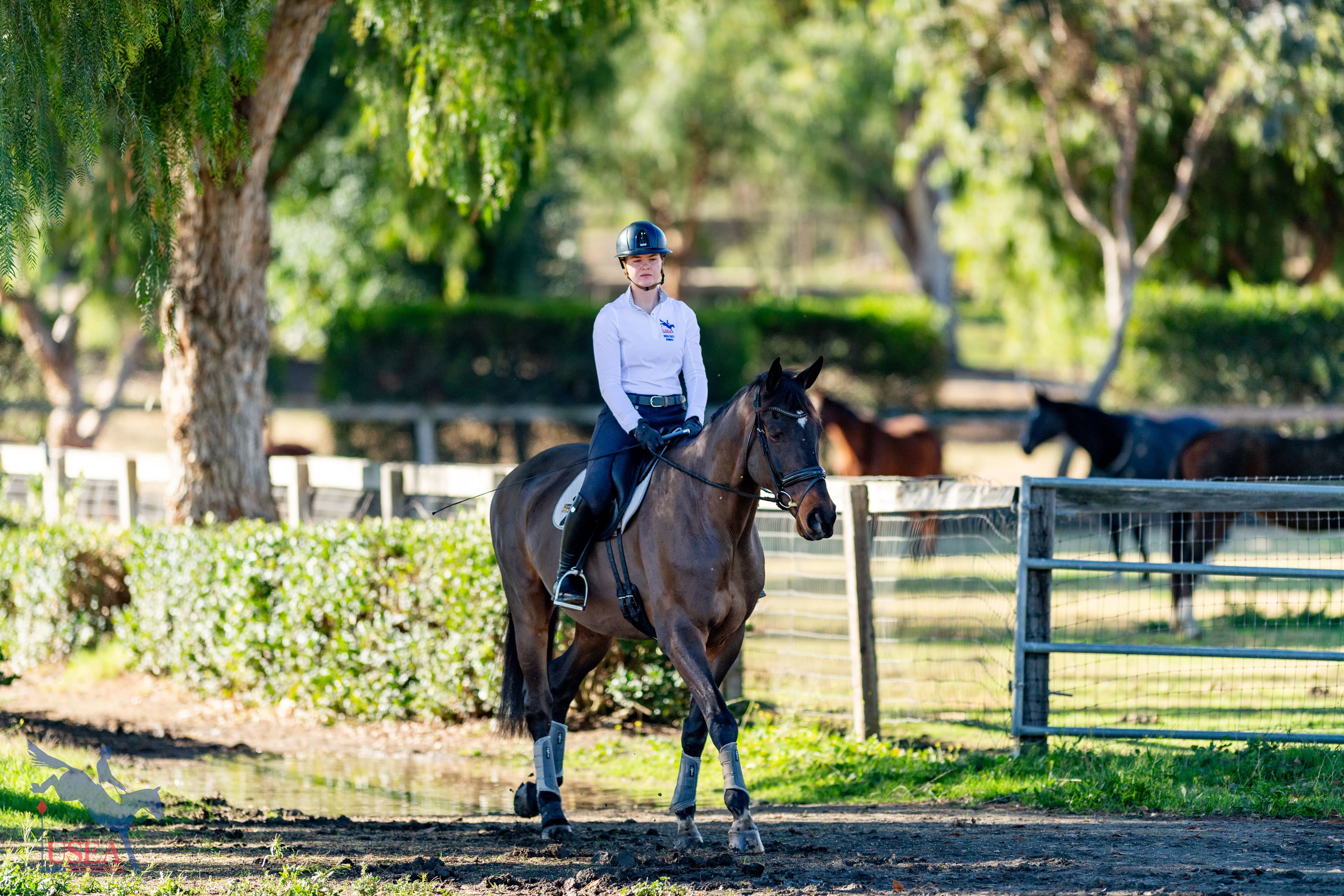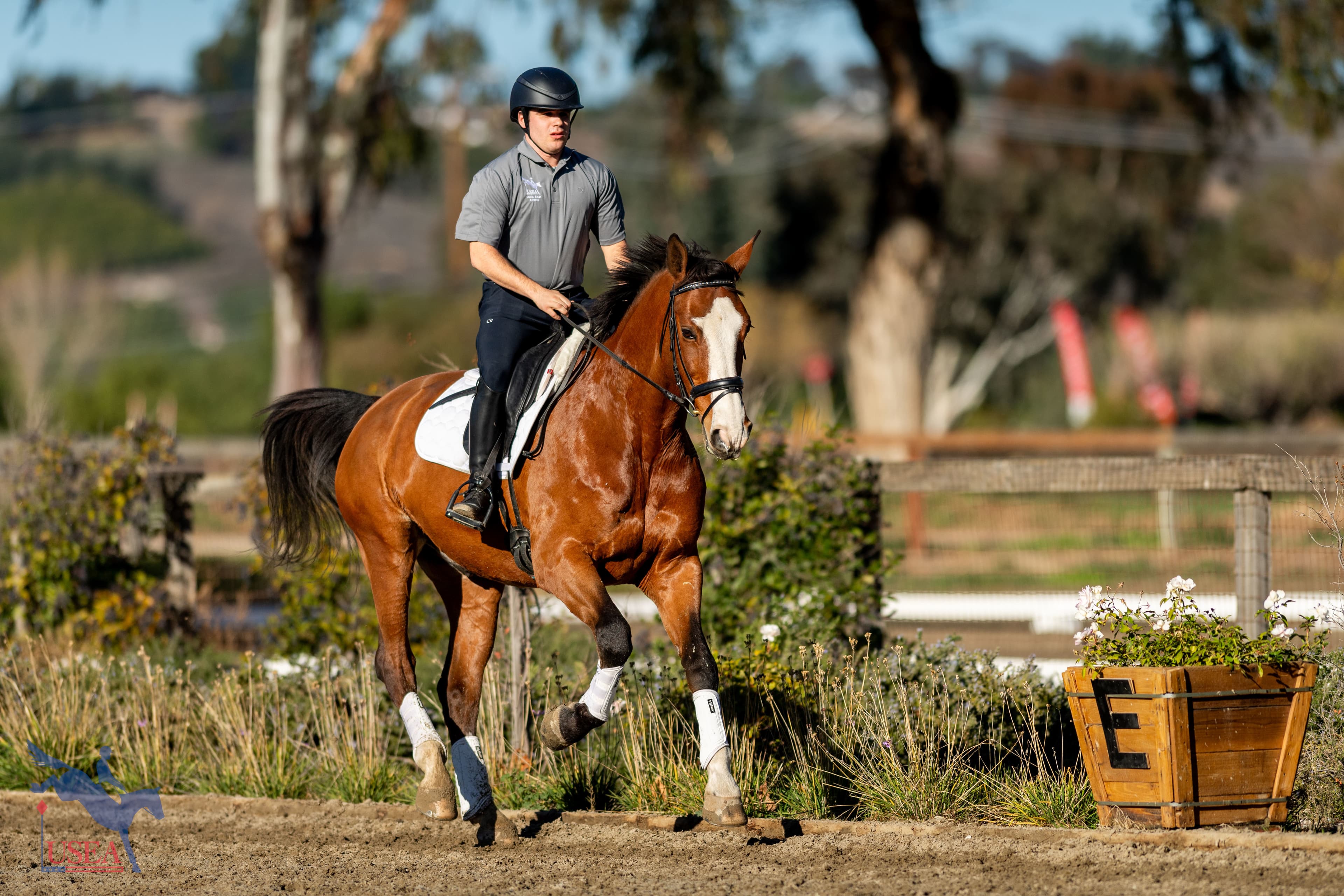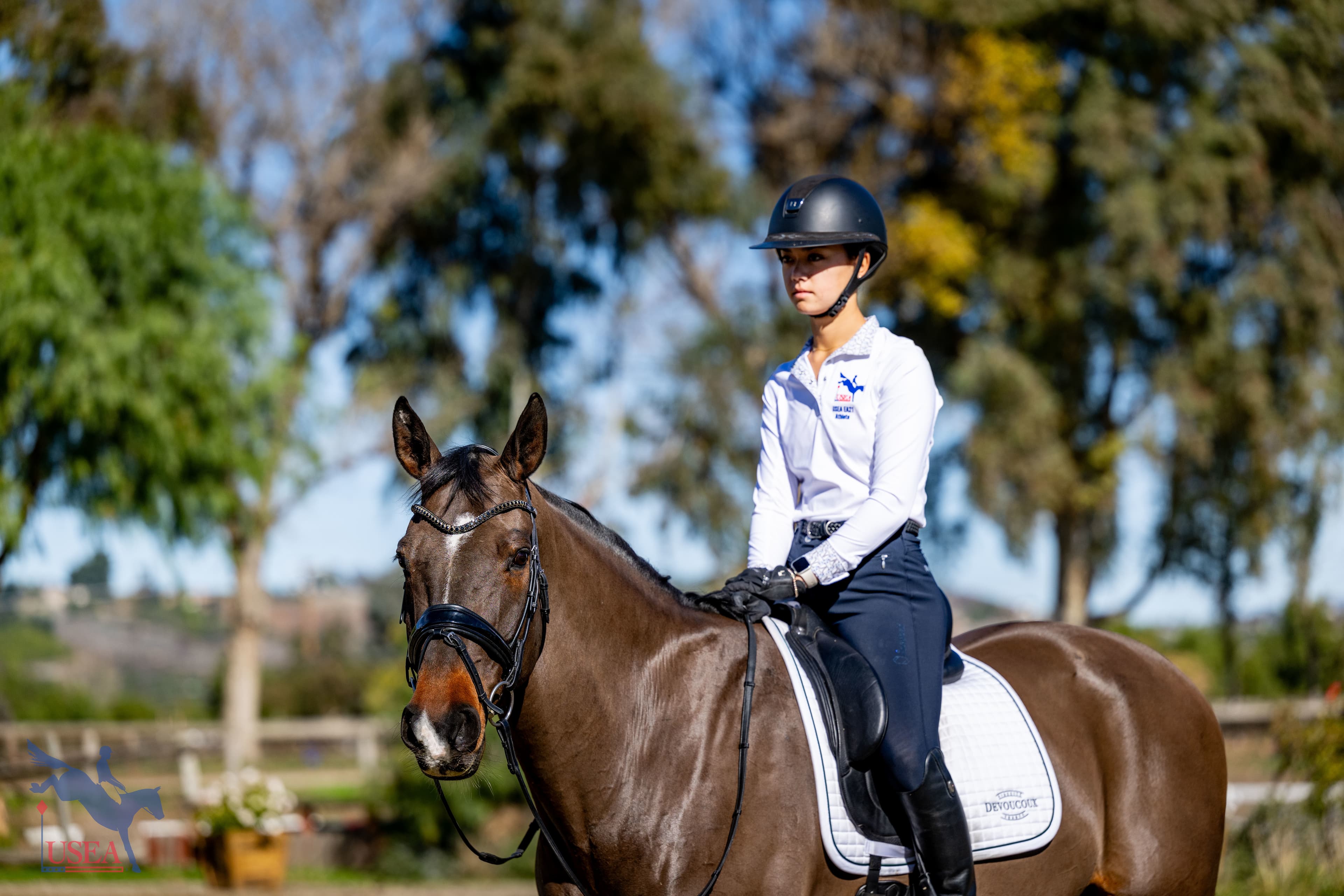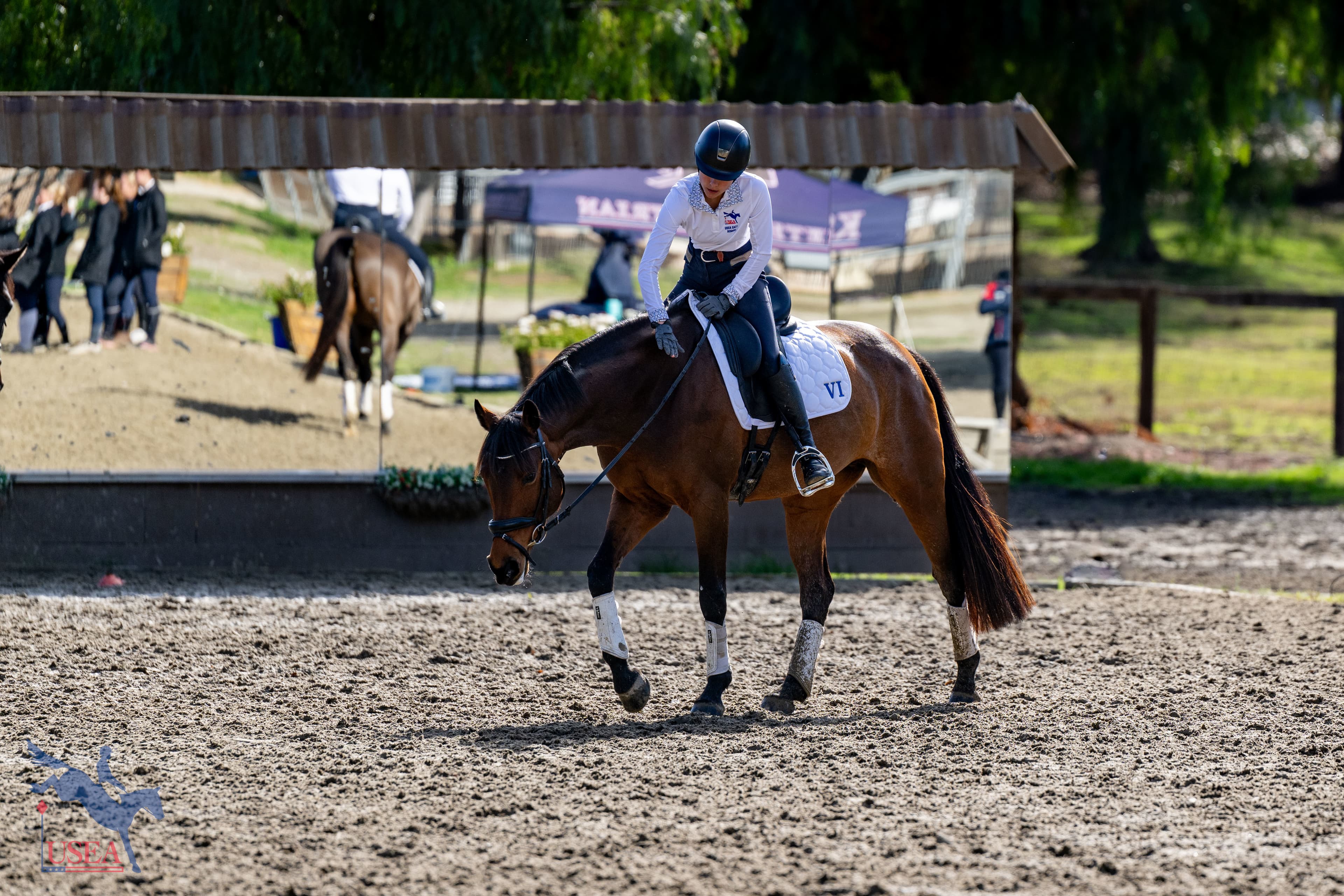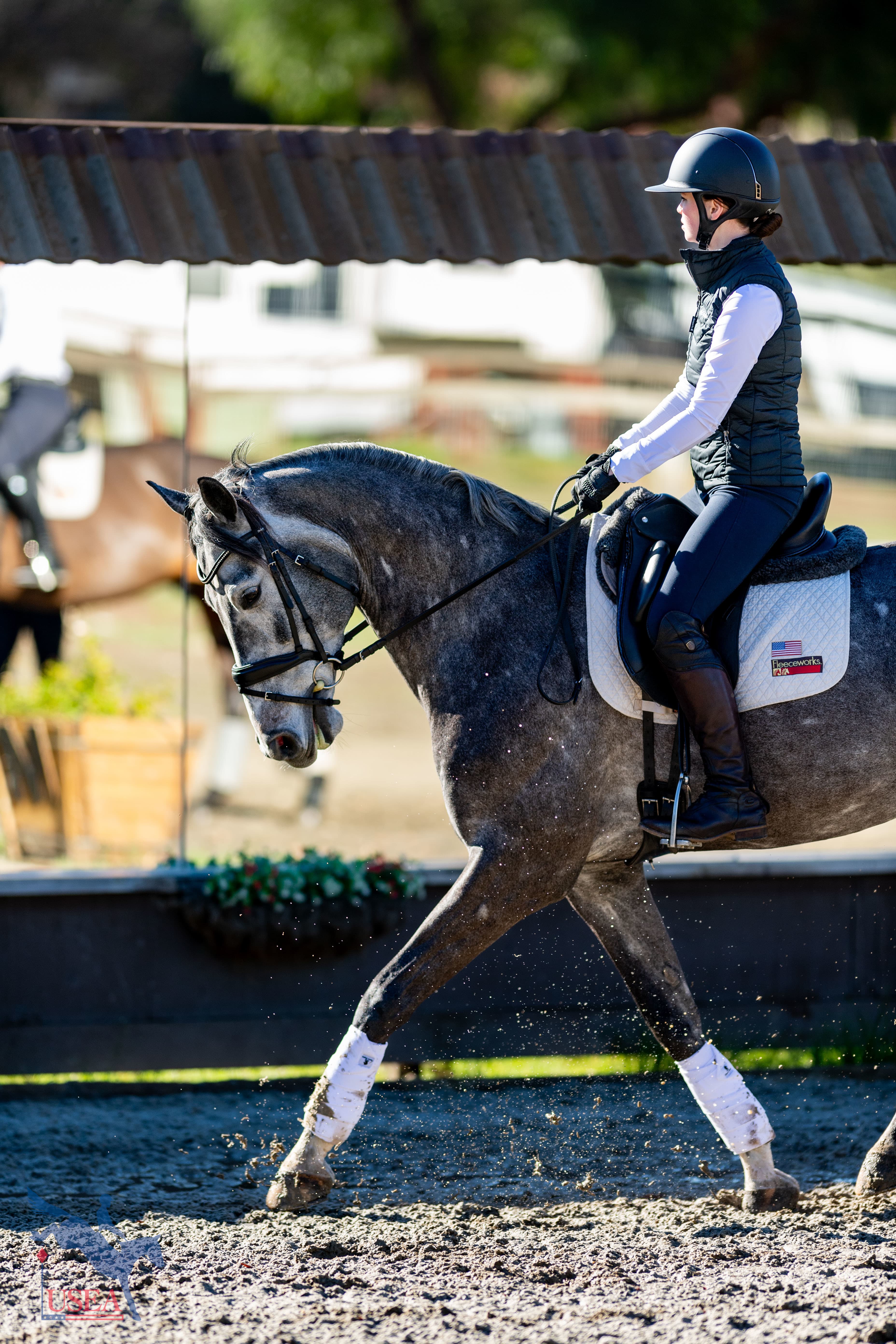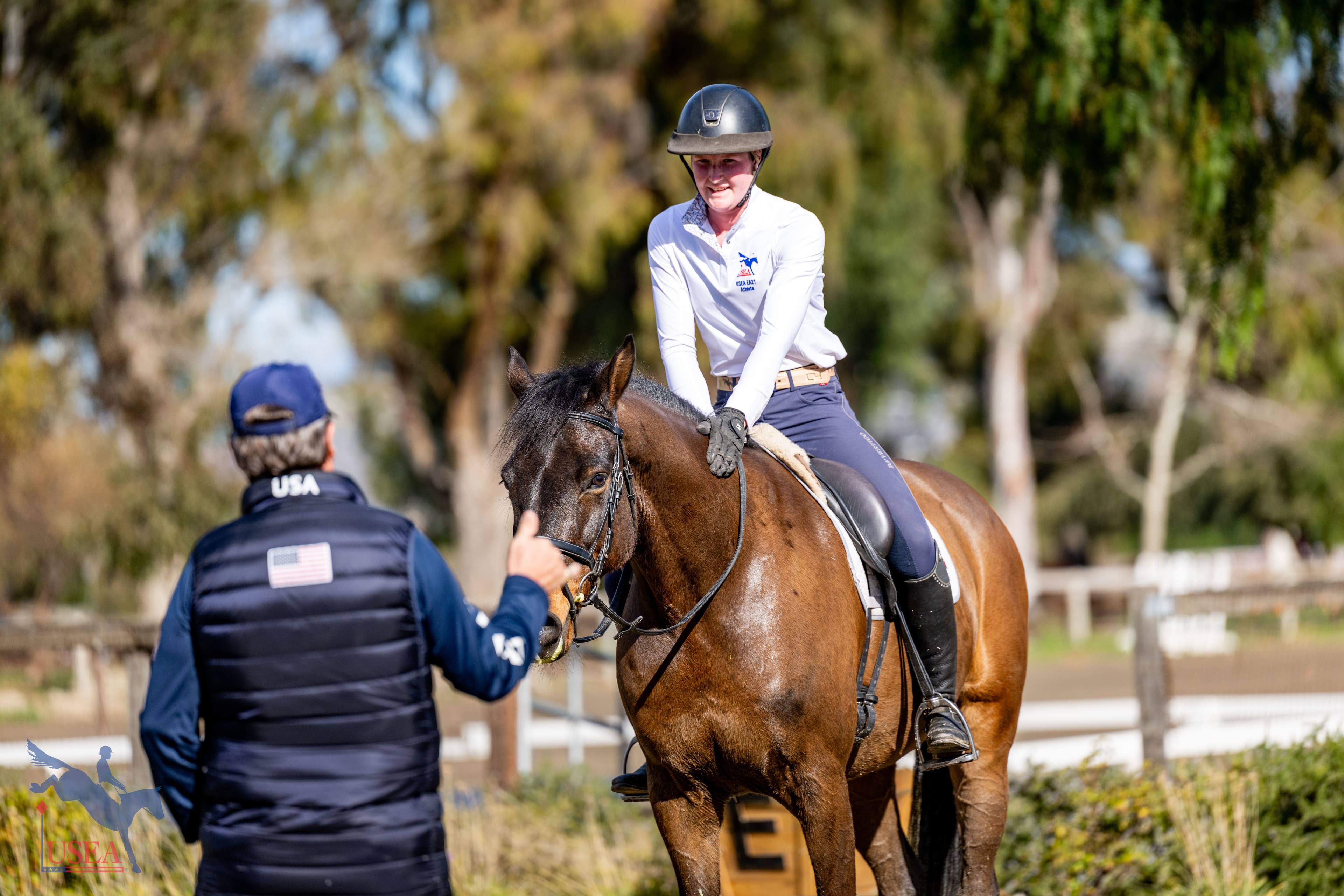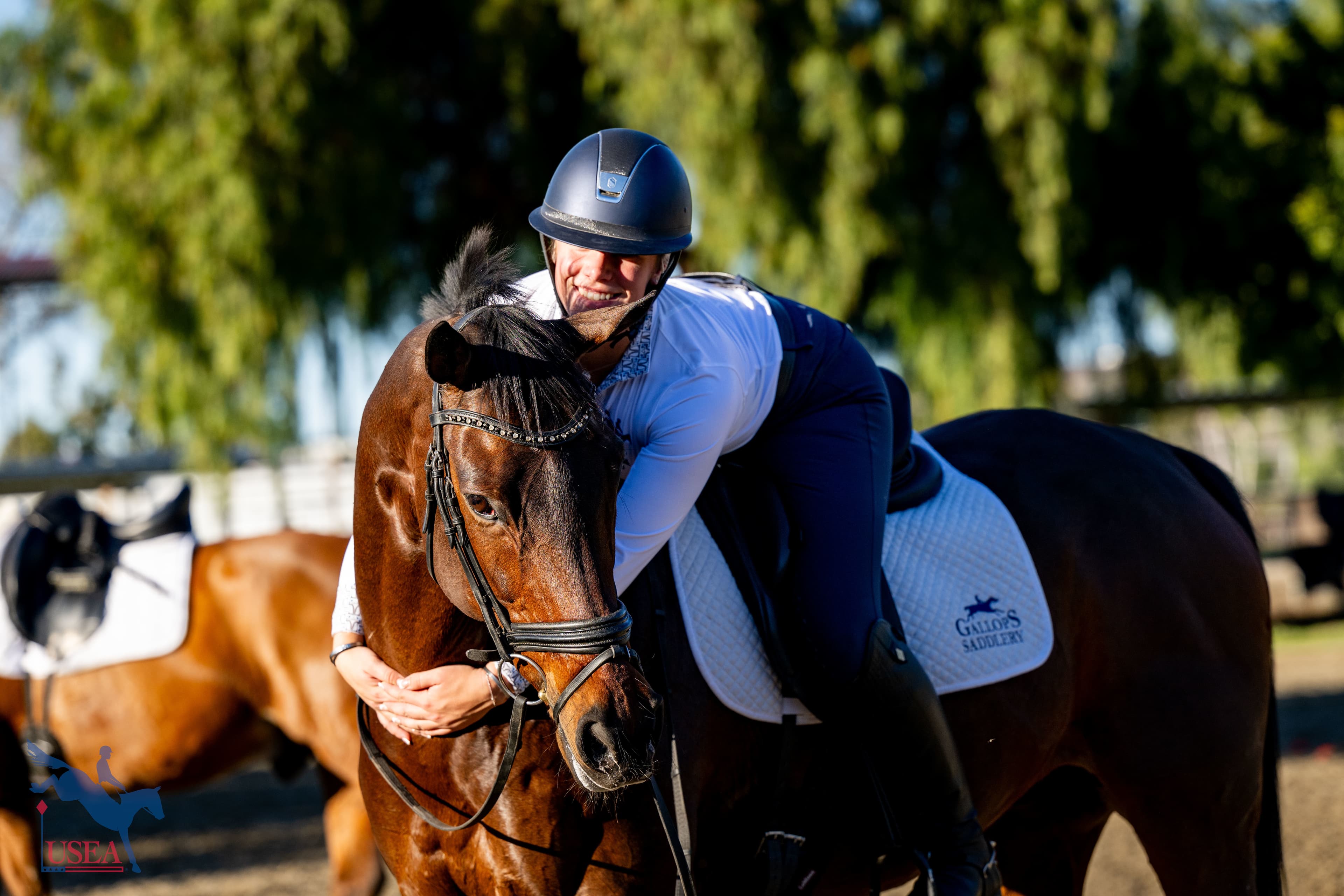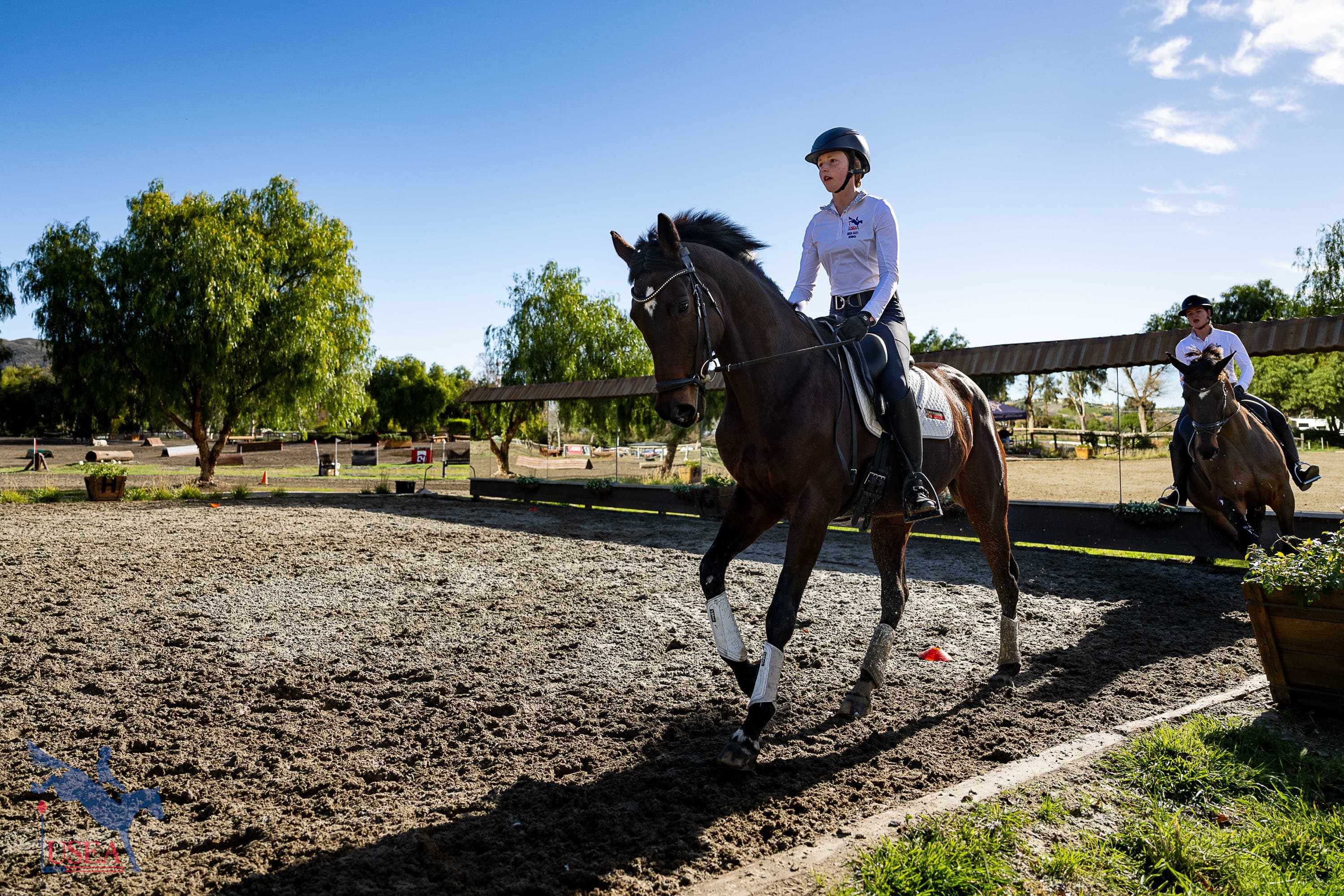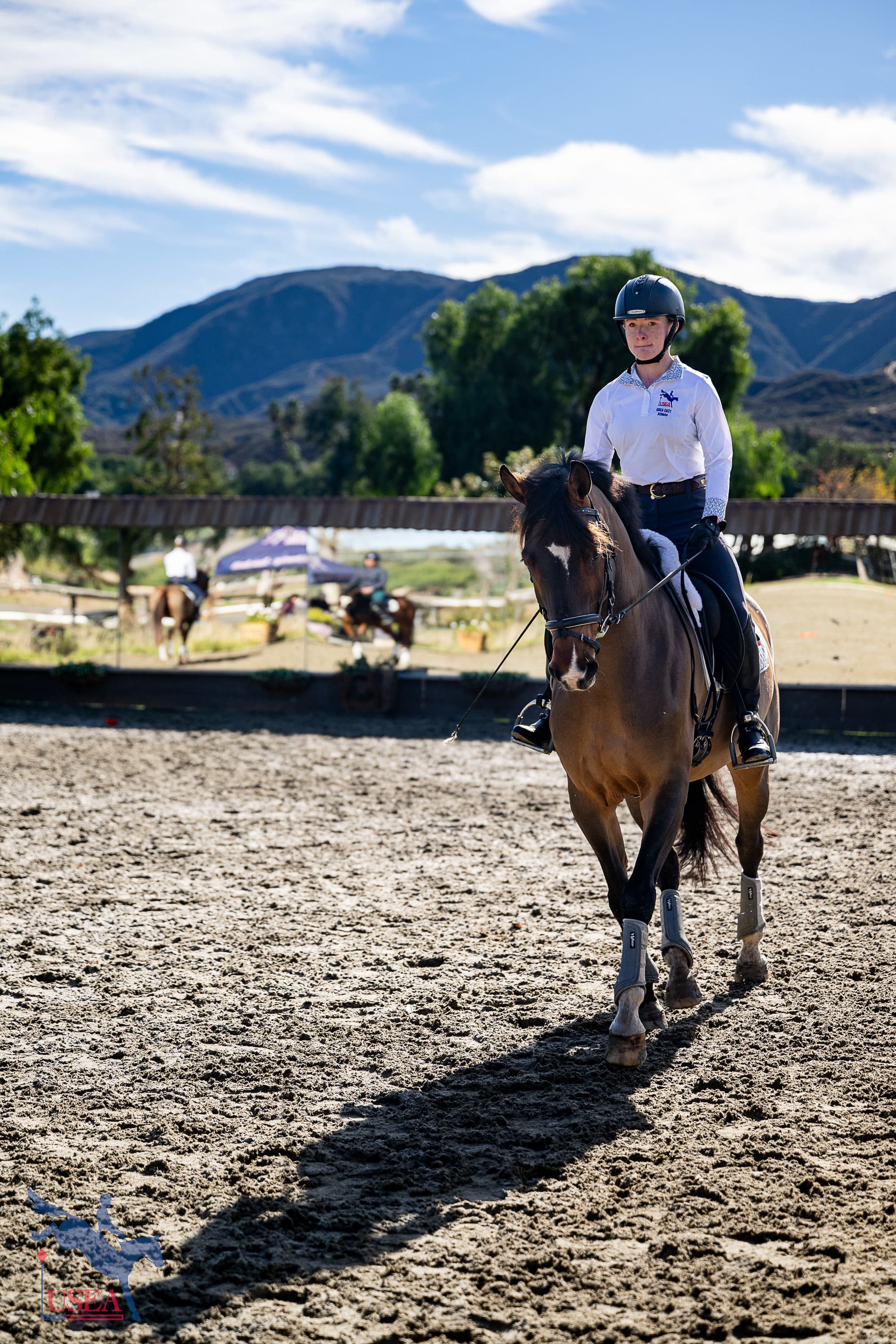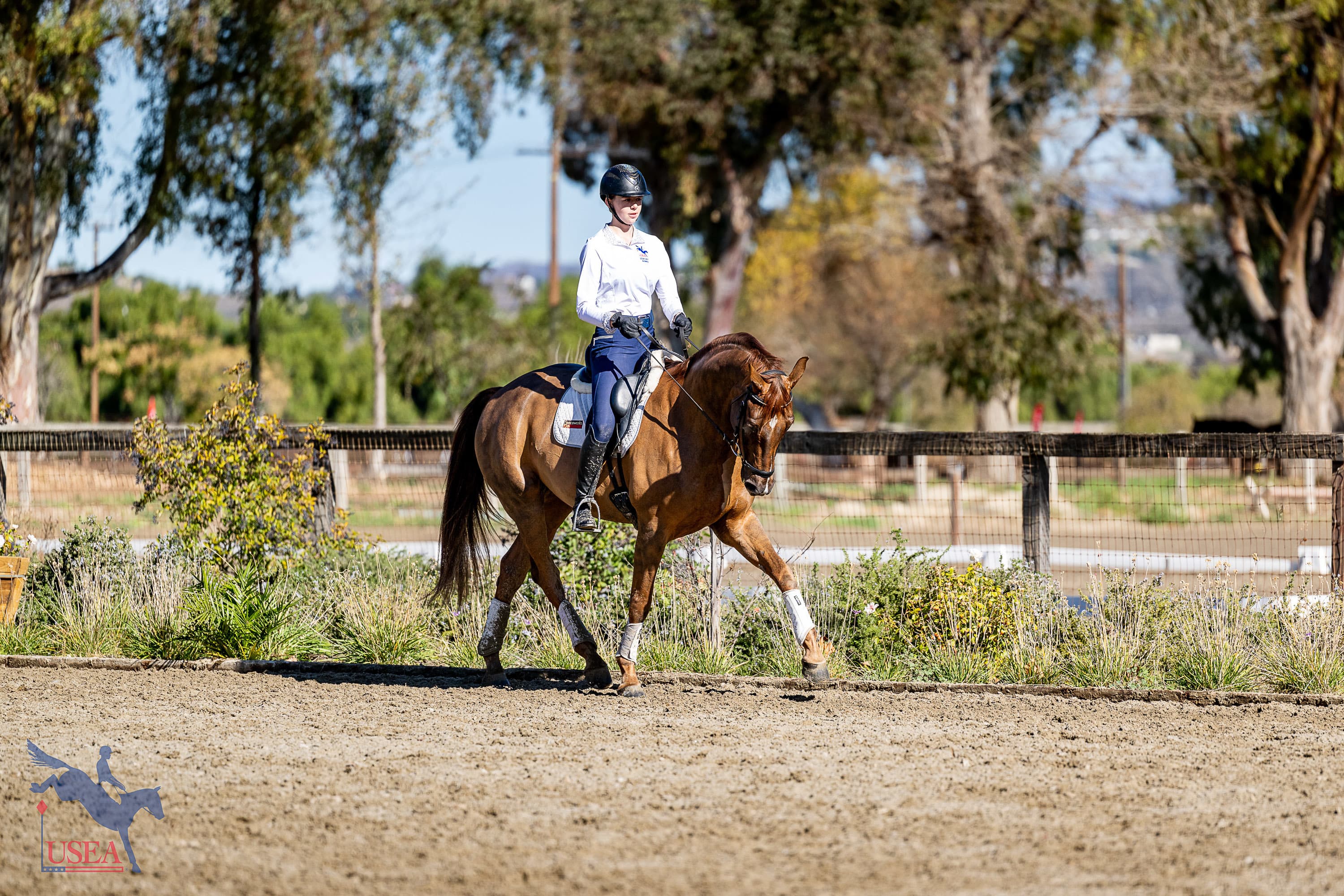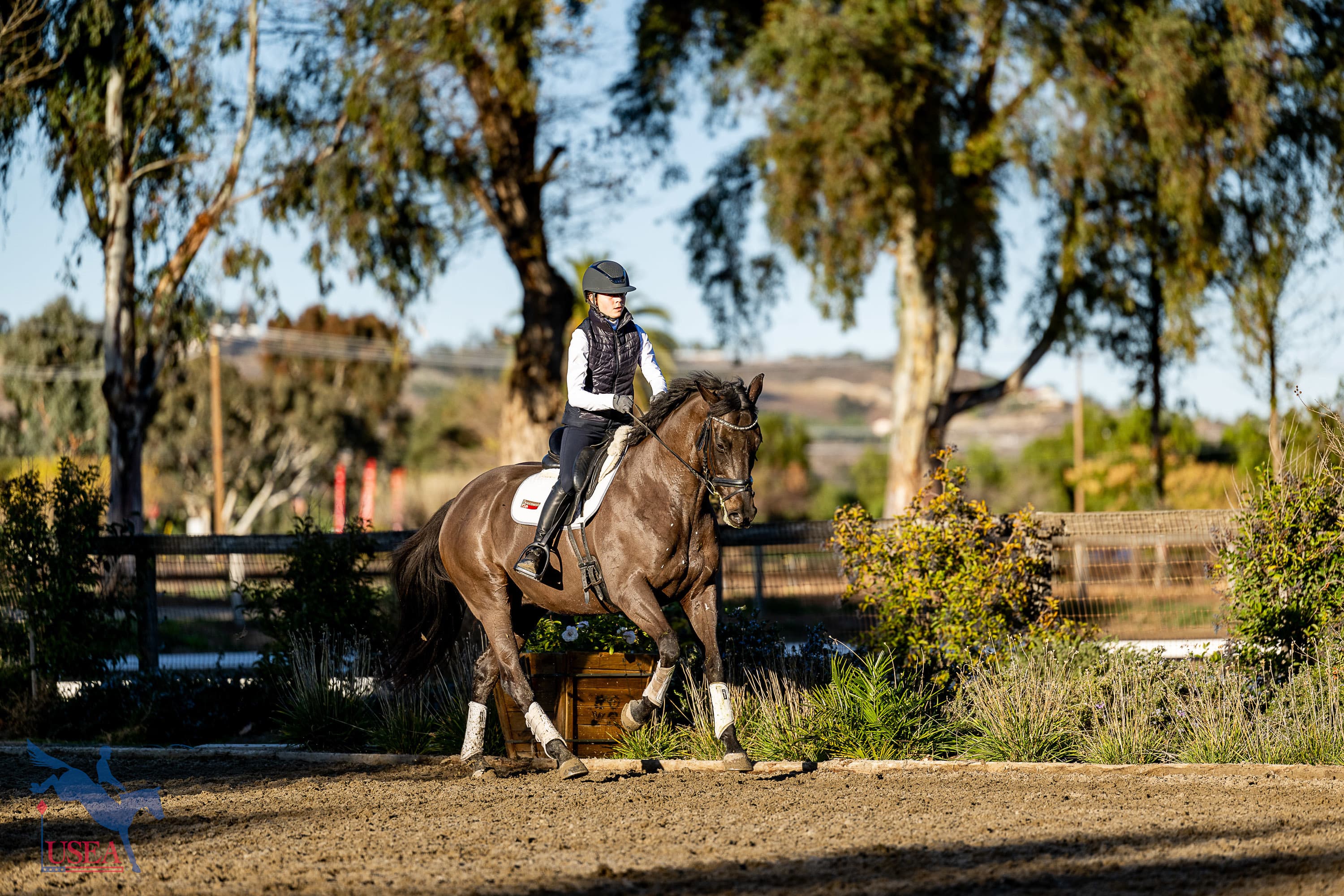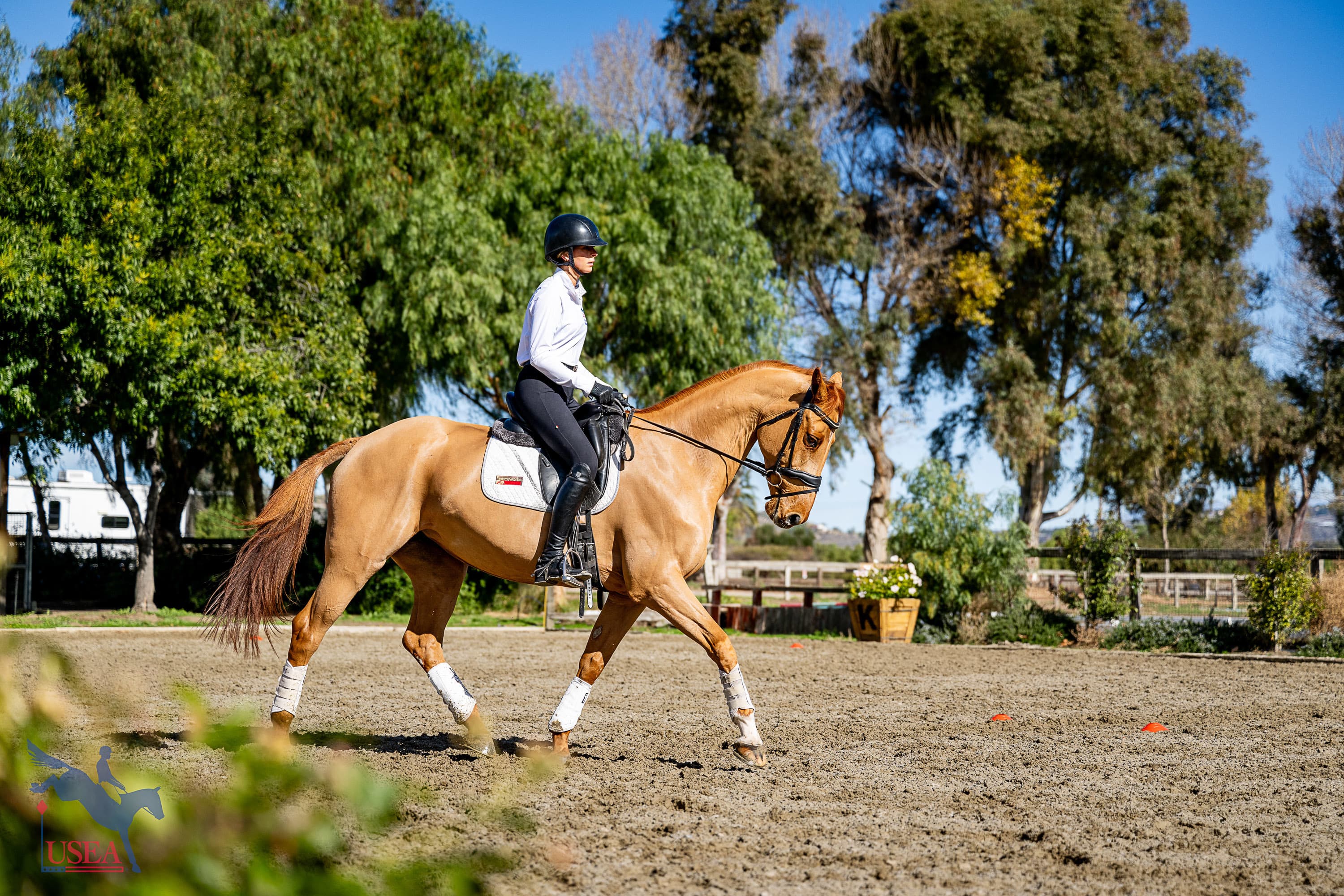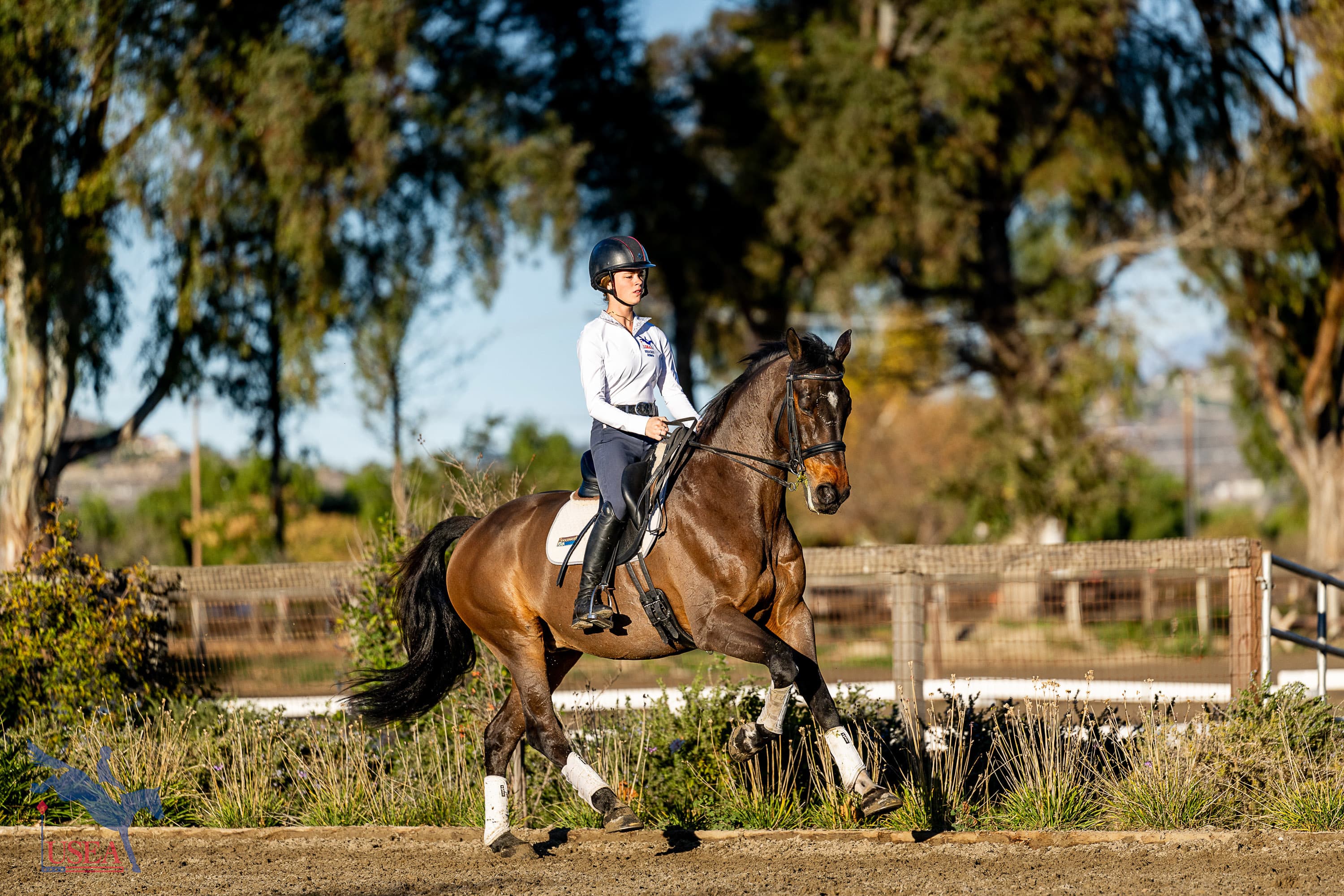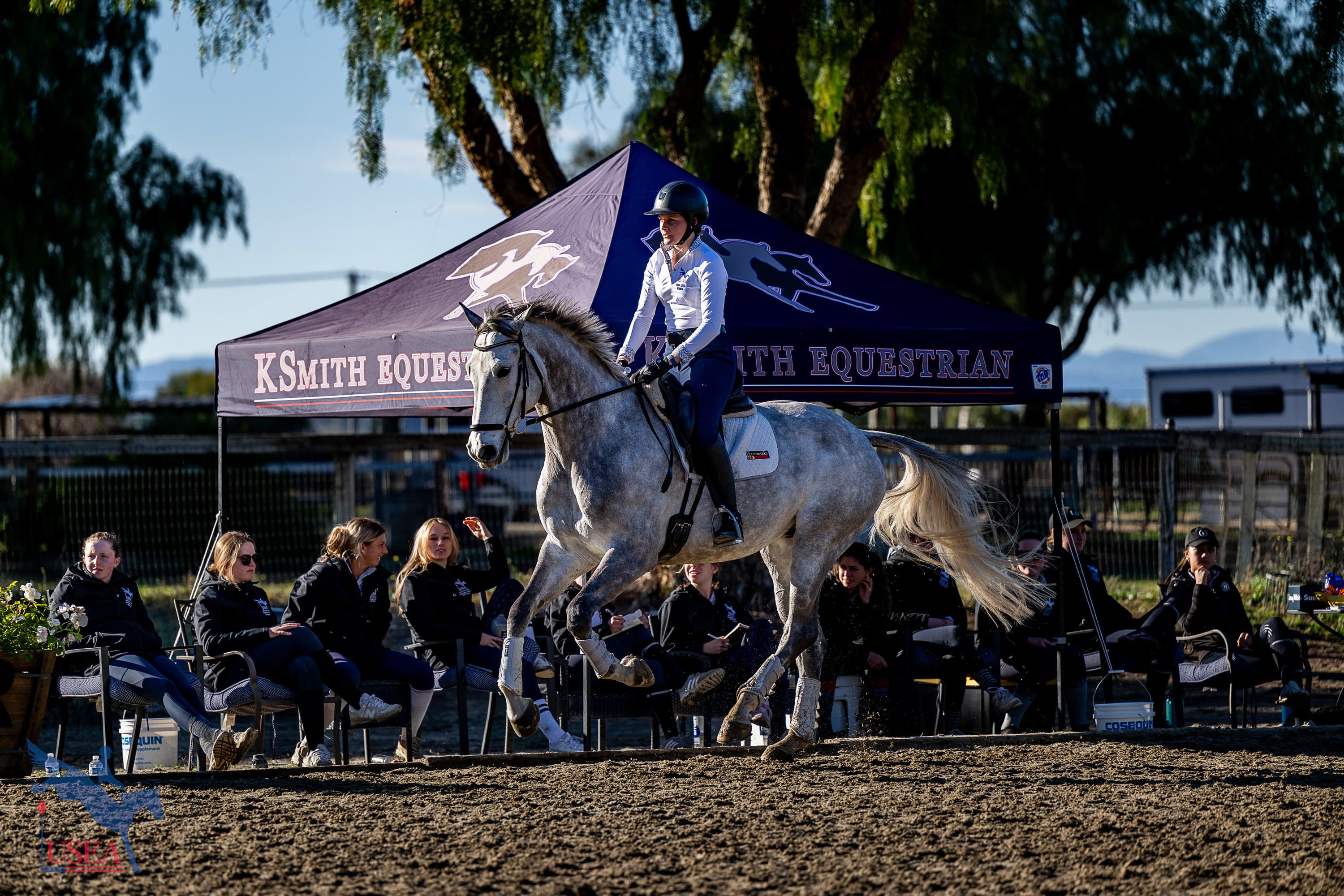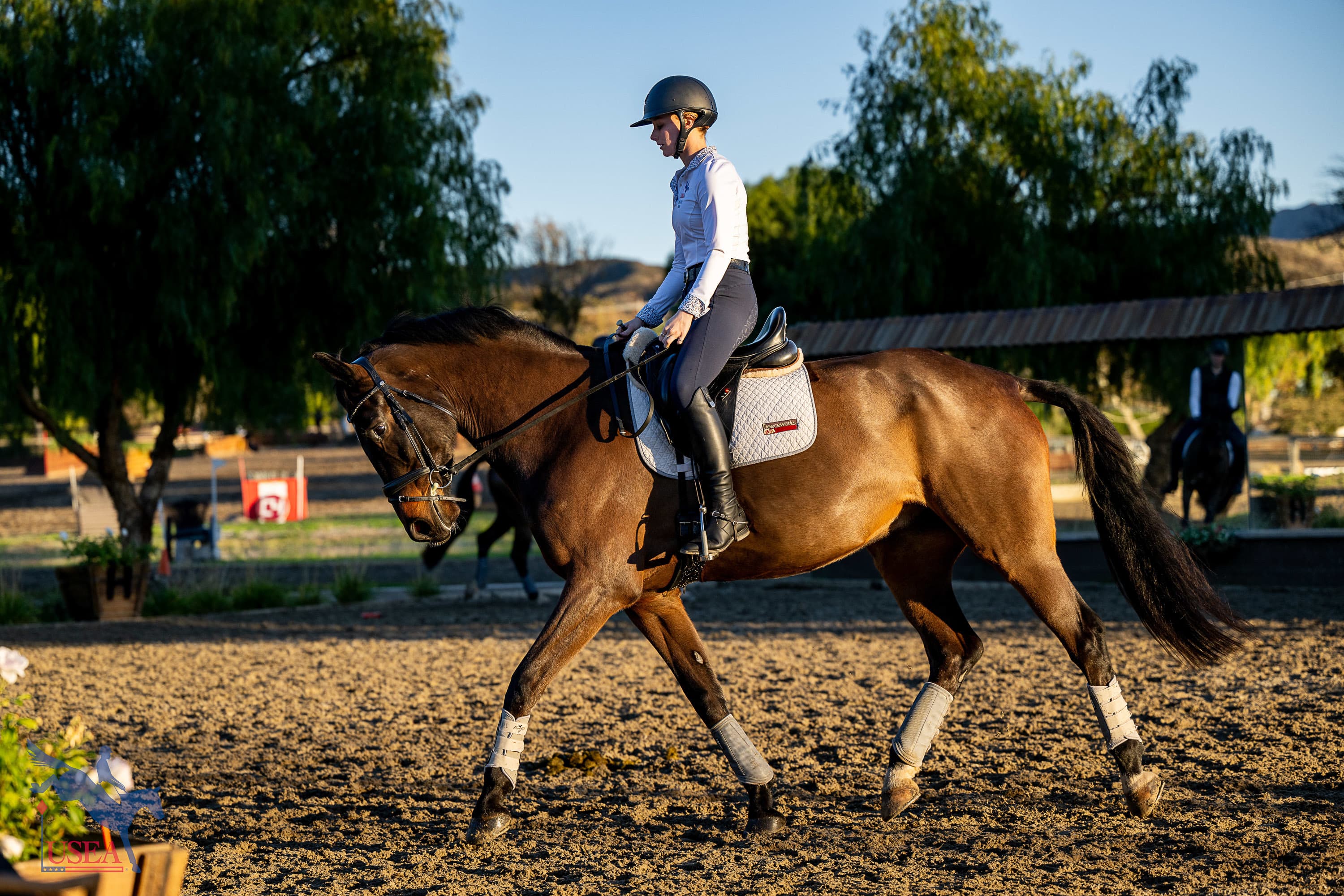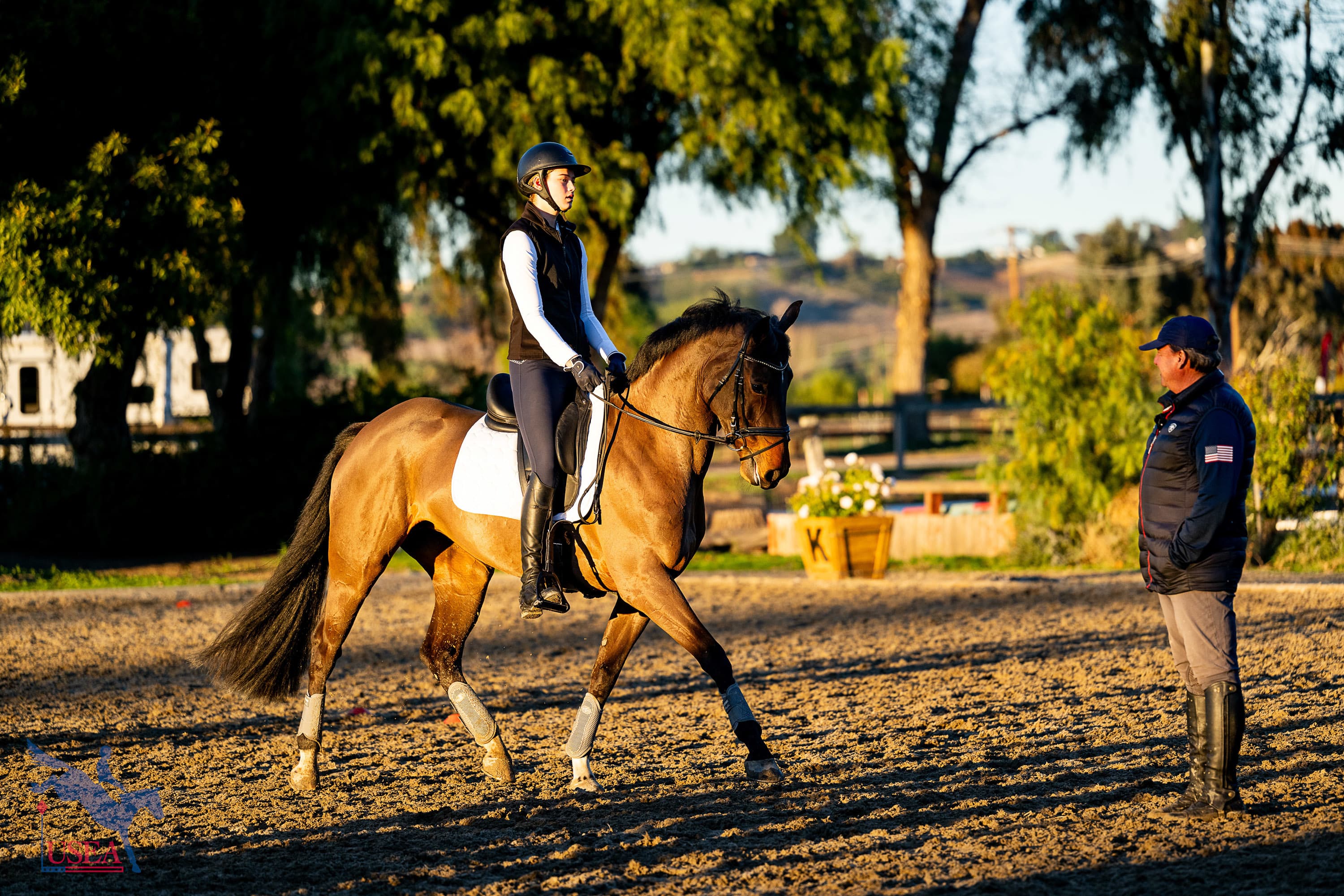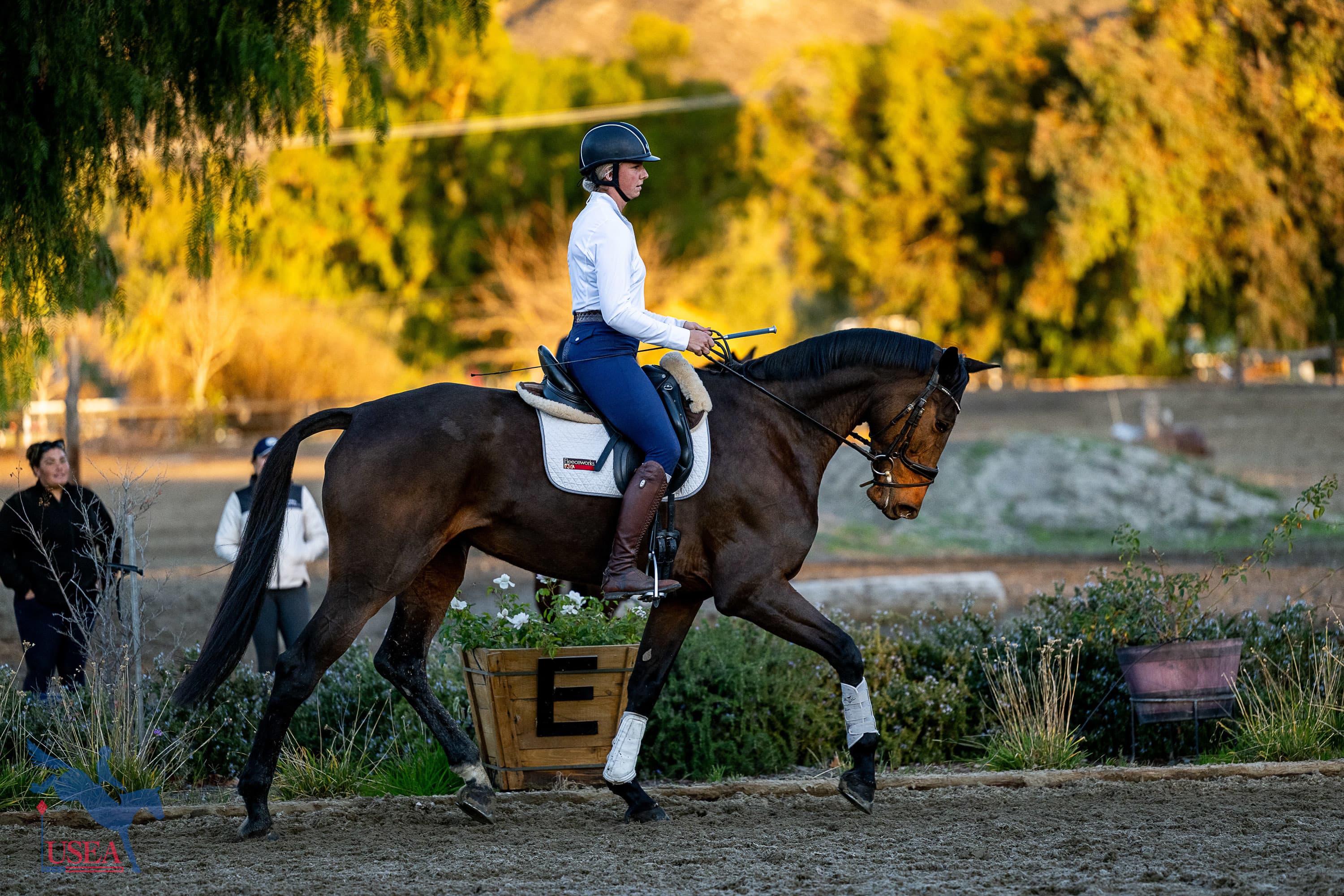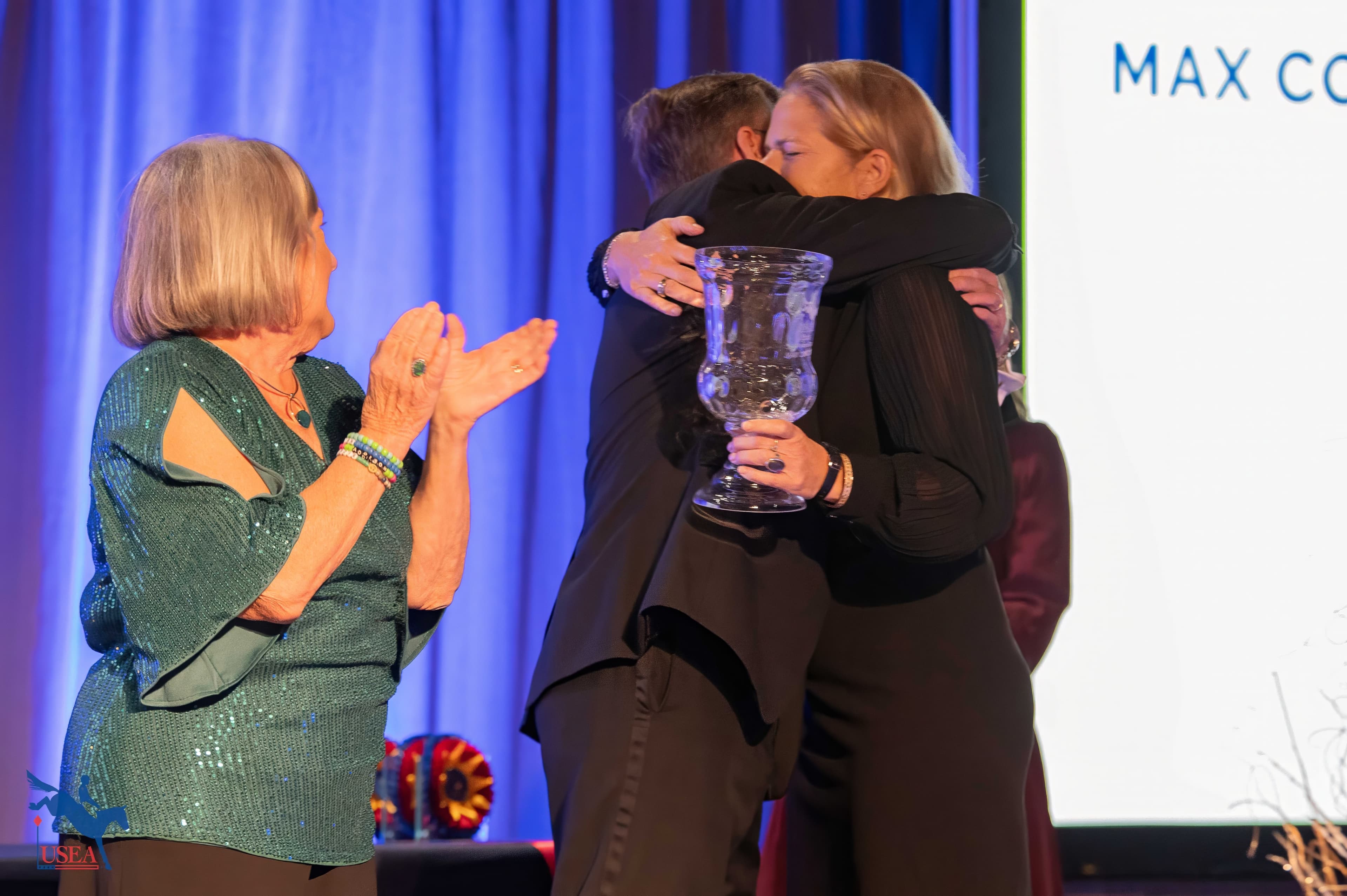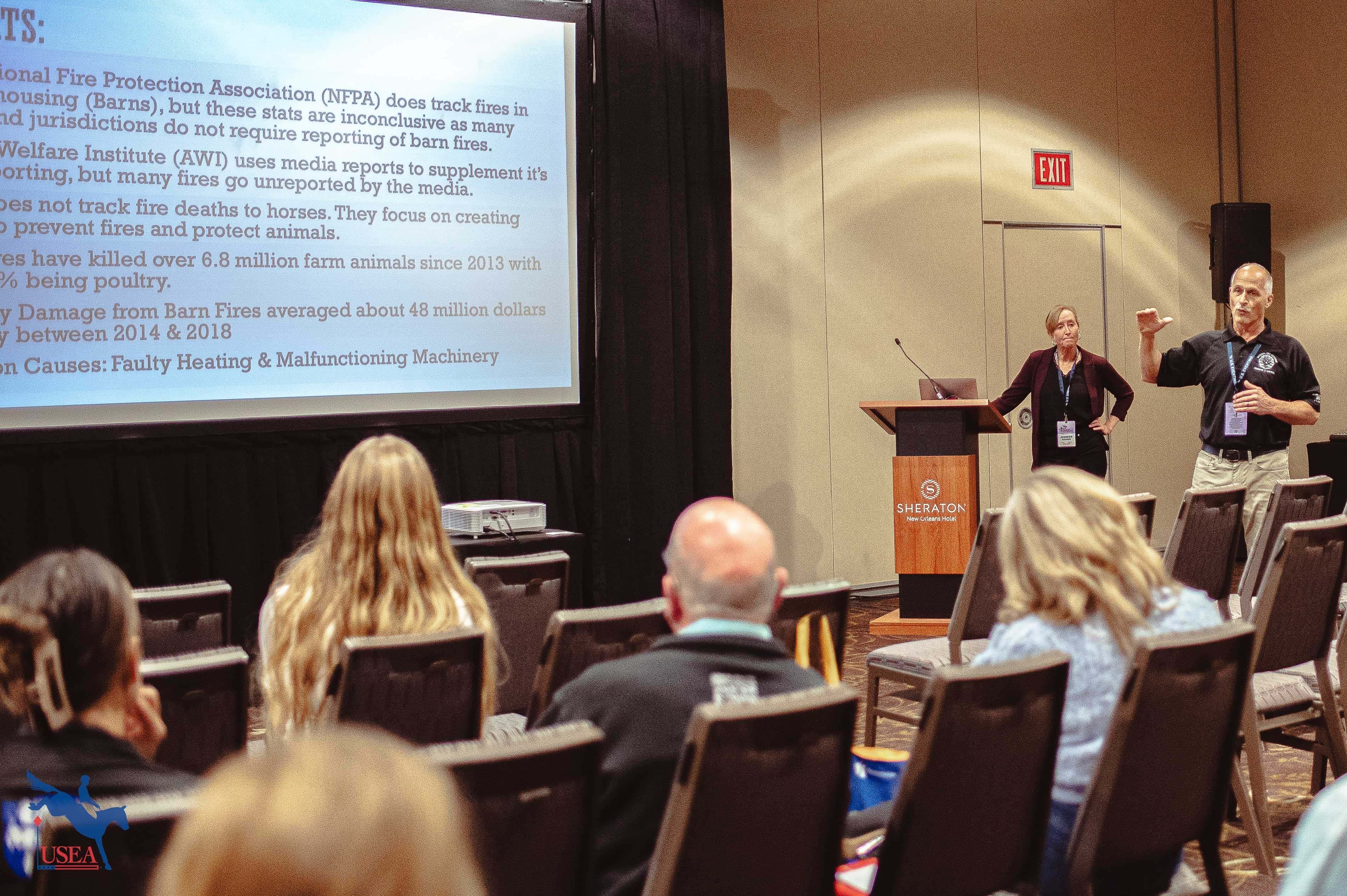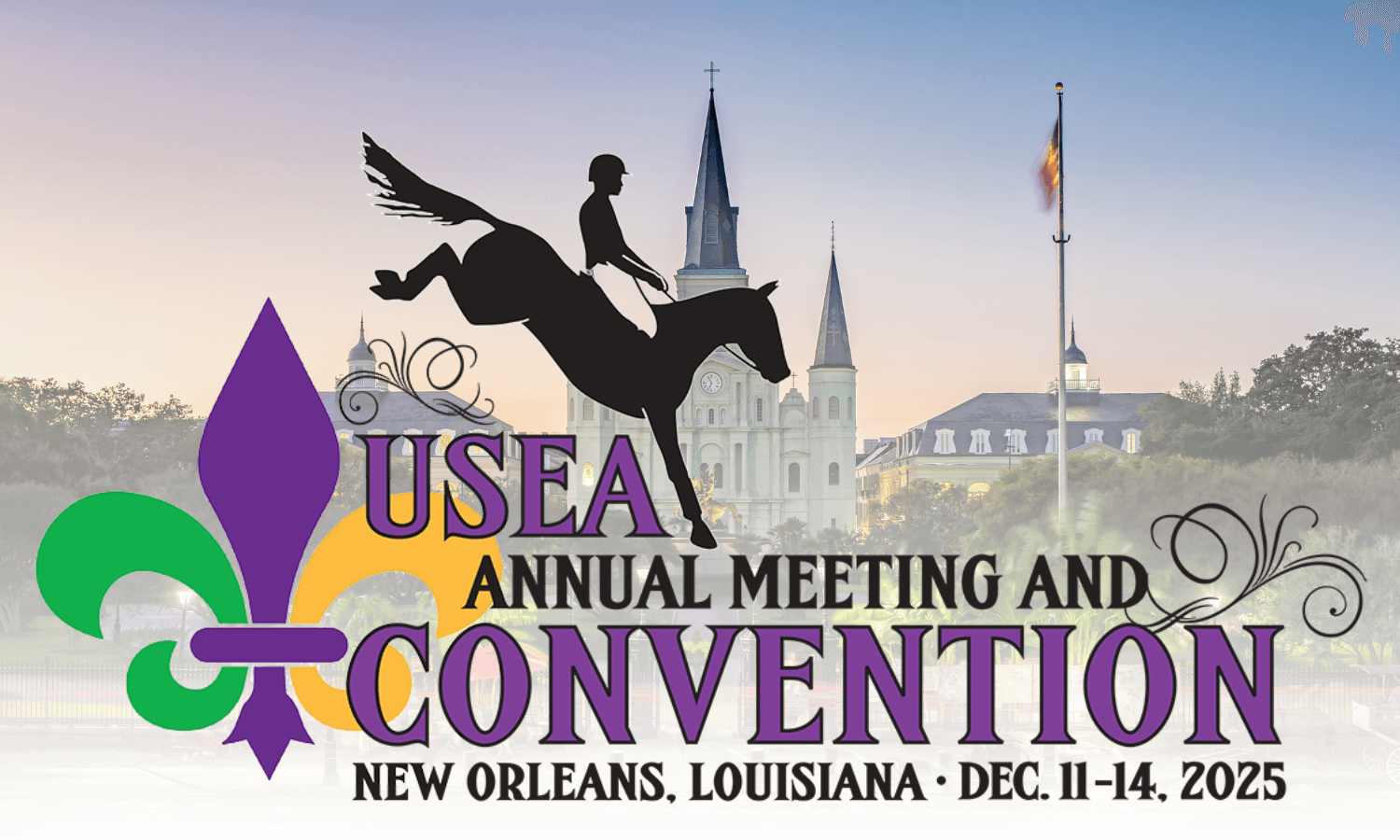Creating Ringcraft on Day 3 of EA21 National Camp
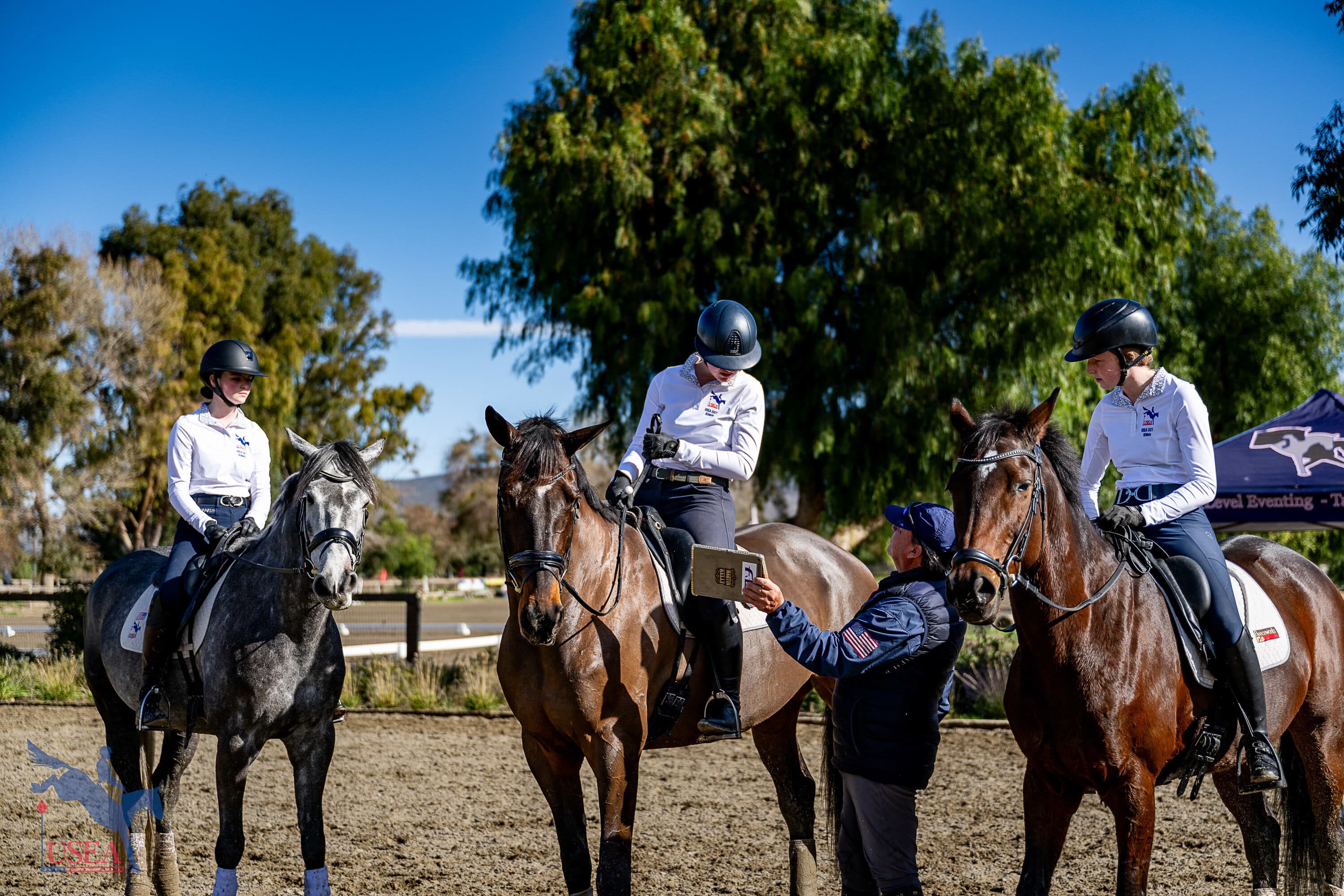
Temecula, Calif.—Jan. 4—Back to the flatwork and back to the classroom for the third day of the EA21 National Camp held at Kingsway Farm. Having combined the study of the aids with the German training scale and the rider responsibility scale, participants returned to one of the first concepts discussed on day 1: training to compete.
As a program with the aim of helping develop riders for high performance and team selections, the importance of learning how to compete and how to navigate course design—whether in the dressage court or over jumps—cannot be overstated. And as many things do, participants began at phase one: dressage.
“When you get into test riding, the key is, how do I use those tools [the aids],” said EA21 Director of Coaching David O’Connor.
Riders must understand where movements stop and start and how the movements before prepare them for the upcoming one. The concept of “next,” discussed the previous day, continued to be hammered home. Getting lost in a moment could mean poor preparation and result in a loss of points in a show ring for lack of clarity and lower quality gaits.
A good test can come down to five steps in the corner. If the corner is used correctly, it can act as a natural check-in point for horse and rider. Consistently using that check-in trains horses to naturally anticipate it, leaving the rider free to release energy forward and direct the partnership to its best levels.
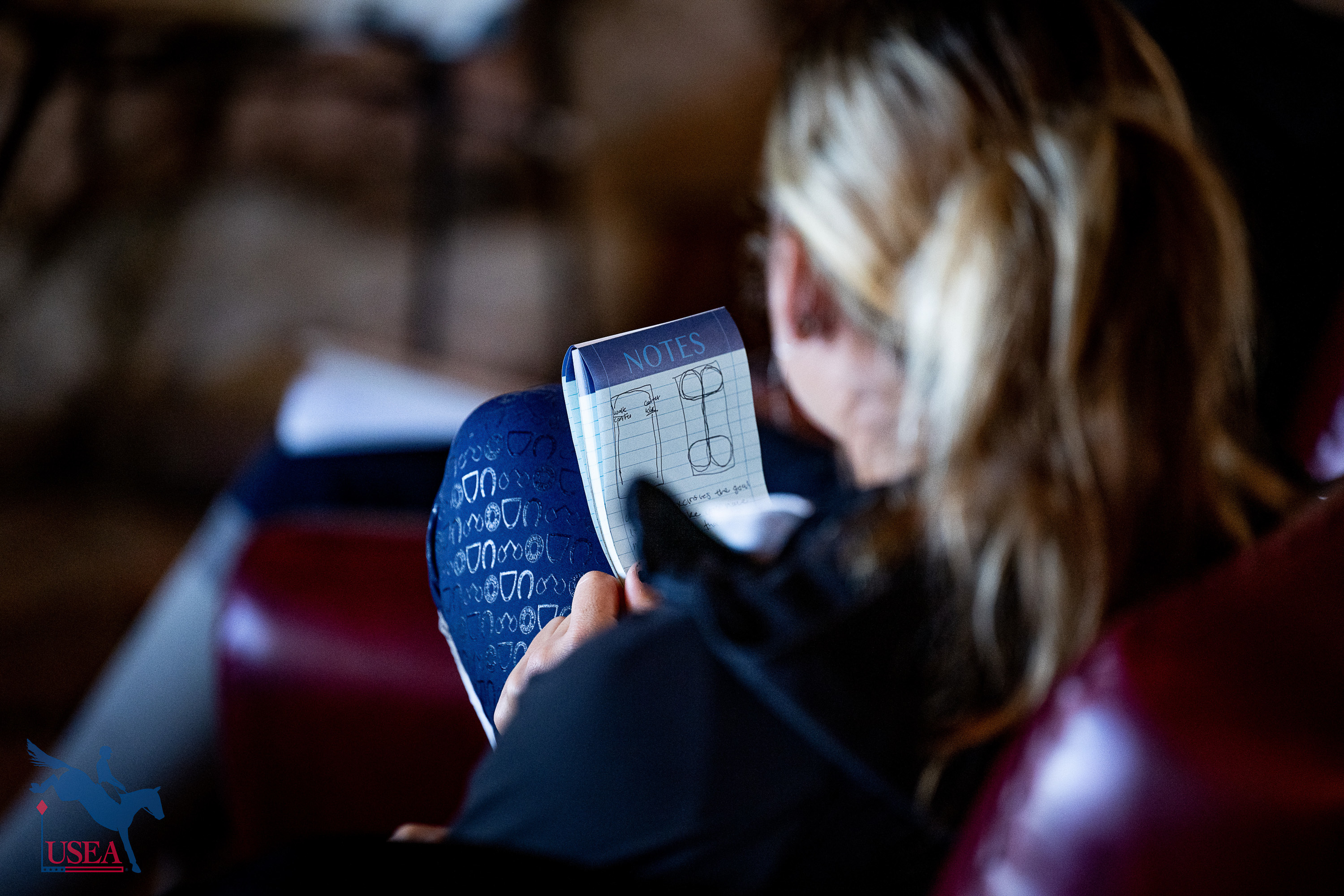
Additionally, a corner can act as a separation between a movement and a turn. Especially in the upper levels when competitors are expected to have a corner with a radius of three meters, this can create valuable space between, for example, an extension and a turn up the centerline. This is what O’Connor describes as “a study of space.”
The study of space is not only about accuracy but also about how to use the ring and how your horse moves within it. Having honest responses to the aids and focus on your position in the ring means that with study, a rider can understand intimately where a mistake can be fixed. If the horse’s shoulders fall in on a circle, does it happen on the third step or the fourth step?
At the conclusion of the morning lecture, participants opened up and asked all sorts of questions of O’Connor. How would one prepare a stiff horse for competition? What to do with head shakers? How can one best help a spooky horse around the ring before heading in for a test?
It was indeed noted. “I think everybody's really into it; the level of questions have been very good,” O’Connor commented. “I think the level of riding is good, which bodes well for the future. And also that the coaching that they're getting at home is good.”
When asked about the catch riding aspect of this year’s edition of the national camp, he had this to say: “The real aspect of what we're trying to do here is ‘this is about riding’. If you ride better, your horses are going to go better. Working on the basics applies to any horse.”
Maia Ramberg sees the catch riding aspect of the camp as a major bonus. “I love the fact that I get to ride a horse that I've never ridden before. He is completely different than the horses I've ridden at home,” she noted. Due to her experiences so far in the camp, “[It’s] so helpful for the future if I catch ride another horse…I know how to begin and where to start.”
Bree Robinette felt there was clear change from day 1. “Over the last two days, there's definitely been improvements in all the horses and all the riders—just like overall pictures and everything.”
Having the concepts of the German training scale so close to hand created true change and new understanding of the benefit of going back to basics.
“If you don't have any foundation, you gotta go all back down again.” Robinette said. “And if you miss parts, there's just open gaps, so you always look back down to the bottom to work your way up.”
But of course, with any new concept, there are learning moments where understanding may not be all the way there. “I've really enjoyed that David's been able to create a very positive learning environment where everyone feels like they can contribute and ask questions and participate,” Molly Duda remarked. “It was great to be able to apply all the stuff that we learned in the morning; and I like the way that [he] focuses on the basics and gives us very applicable information.”
Theory can be heady stuff, but riders were really able to put it into play in quite a few types of situations after only two days. “The first day flatting and then the second day jumping, I thought was just really interesting to see how the two connected and how [focusing on the how the body can make the horse move] influenced my horse,” said Julia Beauchamp Crandon, echoing Duda’s sentiment of applicable information.
With more theory imparted with ringcraft techniques, participants once again had a chance to play the game on the horse’s back.
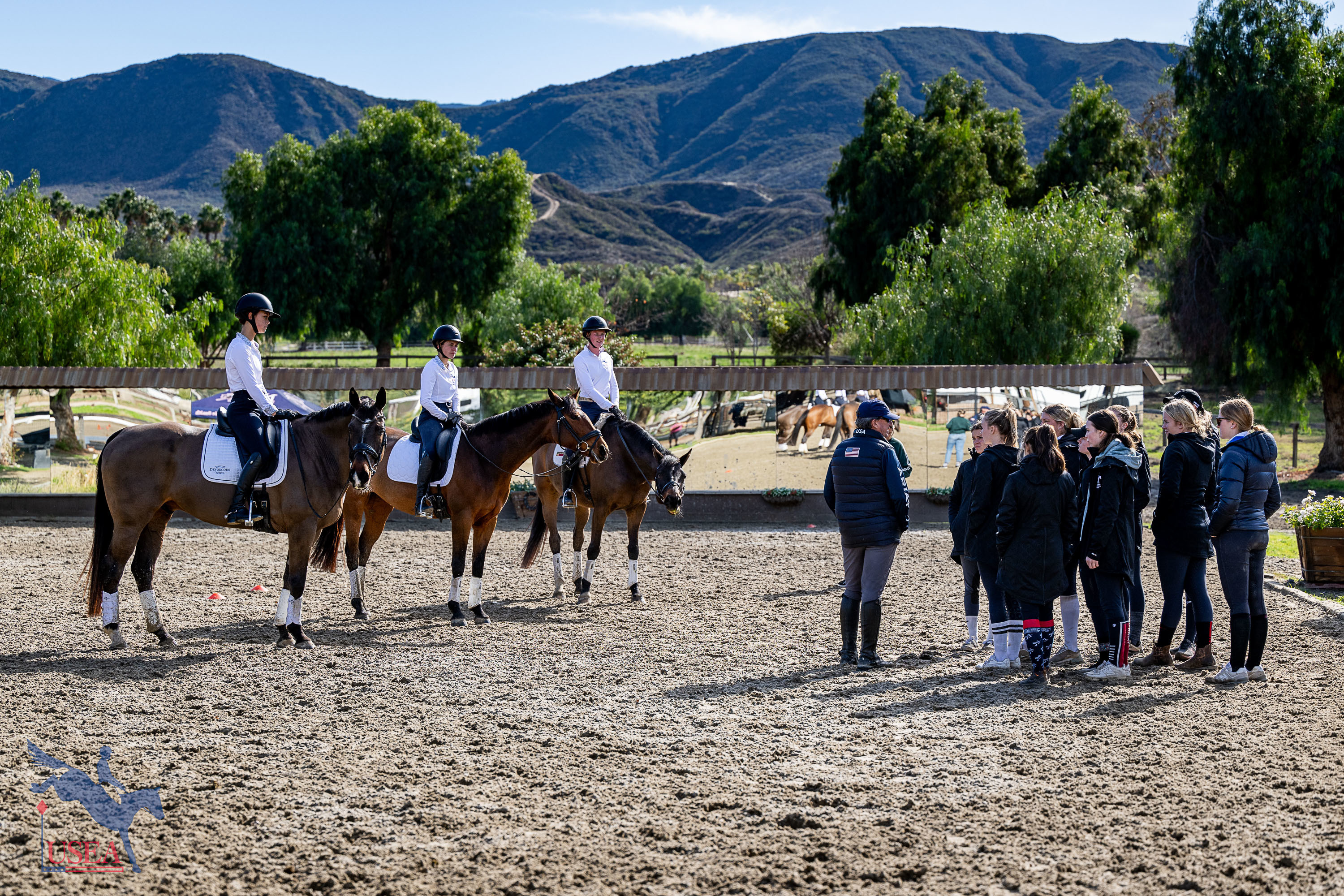
Every session of the day focused in large part on an exercise O’Connor calls four circles. In a standard dressage ring (20x60 meters), riders were required to make a 10-meter circle in each corner with a transition from medium to collected on each straight side, including the short side. Cones were placed before and after the corner as a clear visual reminder to start training a check-in for the corner as was discussed in the morning.
Tying together the techniques of the first two days, riders were asked to use their seat to influence a change in stride length rather than their hands while maintaining the most basic responsibilities of rhythm and direction. They could of course use the scales (German and rider responsibilities) to improve their ride, but they must have those three in place.
Then it was repetition, repetition, repetition.
This was drilling for the riders certainly but for the horses, it was about interest.
“The problem with creating impulsion in a ring is the limit of space,” O’Connor said. “So, you have to make the exercise interesting enough to keep interest.” By working so many transitions and circles, the horses stayed engaged and present in the exercise.
On such a deceptively simple exercise, problems reared their heads left and right. One rider struggled to stay sitting straight, and O’Connor introduced a coaching app called Dartfish to help show her how she was sitting with in app editing to a video he had taken of her.
In a different session, one horse proved a less then helpful partner which prompted a true going back to basics. O’Connor instructed her to worry only about the rhythm and balance, using transitions and bigger circles to help bring the horse’s attention back to the task. No contact and no frame were to be asked of the horse until there was steadiness in rhythm and direction.
Indeed, participants saw the training scale in action as once this was achieved, the rider was able to engage the horse and proceed to reintroduce contact and frame at a higher quality then could have been achieved previously.
Group after group, rider after rider felt and saw dramatic improvements in the quality of not only the horse’s impulsion but also the reach and suspension created through these basic and repetitive transitions and circles.
“Talent is the bonus to training,” O’Connor said. “It’s the least important part of it. [Riding]’s a game I want to play but I have to be a student of it.”
Learn the theory. Make technique into instinct. Study the sport.
Camp continues on Friday with a classroom session at 8 a.m. PST, followed by course work lessons from 9:30 a.m. until 5 p.m.
Helpful Links:
Don't forget to follow the USEA event coverage on social media!
About the USEA Emerging Athlete U21 Program (EA21)
The purpose of the USEA Emerging Athletes U21 Program (EA21) is to identify and provide consistent quality instruction to the next generation of elite event riders. The aim is to create a pipeline for potential team riders by identifying and developing young talent, improving horsemanship and riding skills, and training and improving skills and consistency.
The USEA Emerging Athletes U21 Program was launched in 2022 with a model of five summertime regional clinics taught by selected USEA Eventing Coaches Program (ECP) instructors, leading to a winter national camp consisting of selected Young Riders from the regional clinics. Athletes who are 21 years or younger, are current members of their USEA Young Rider Area program, and are established at the Training Level or higher, are eligible to apply for the EA21 program. Click here to learn more about the USEA EA21 Program.
The USEA would like to thank Kerrits, Ride iQ, Sidelines Magazine and WeRideTogether for sponsoring the USEA Emerging Athletes U21 Program.
